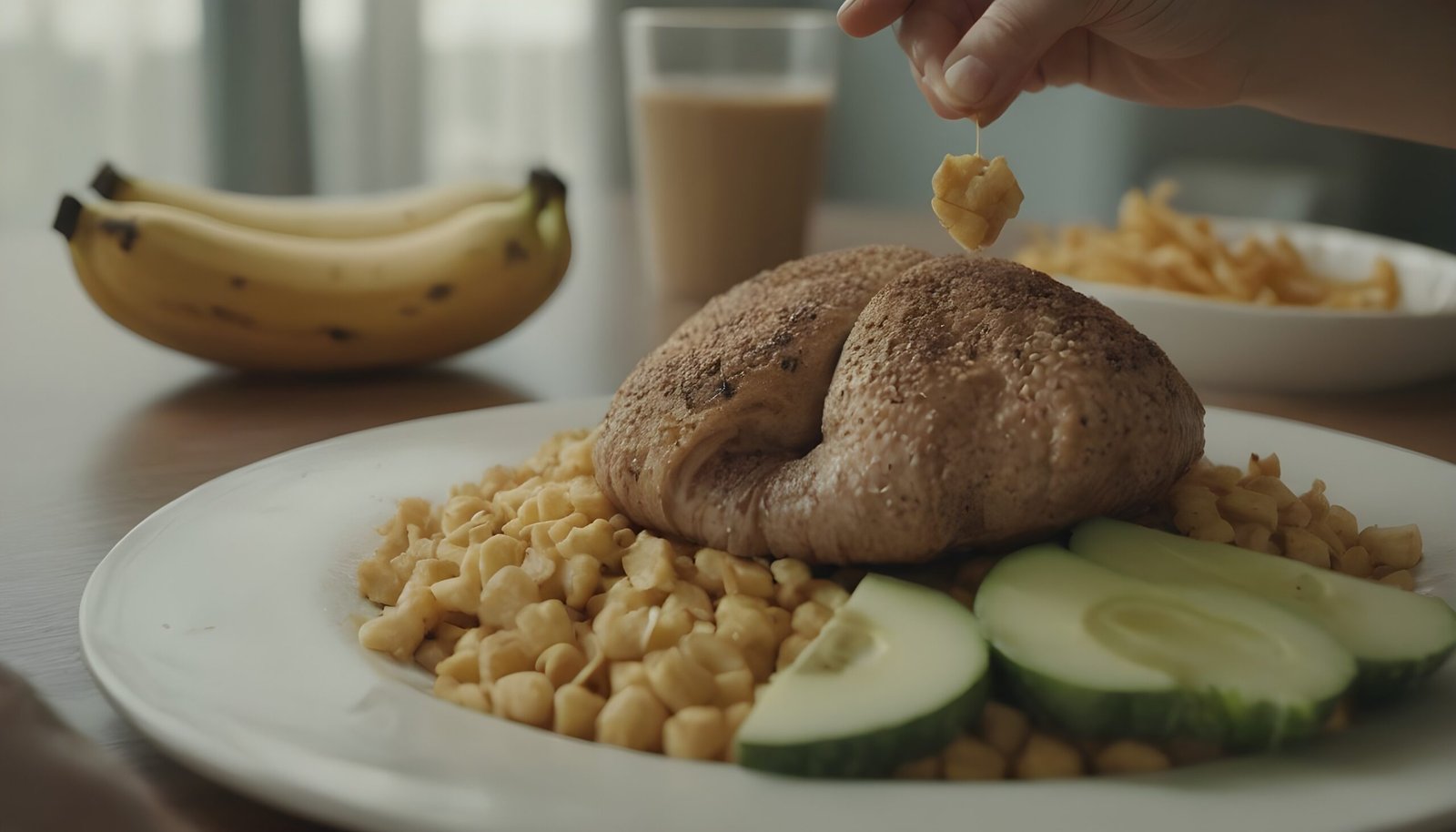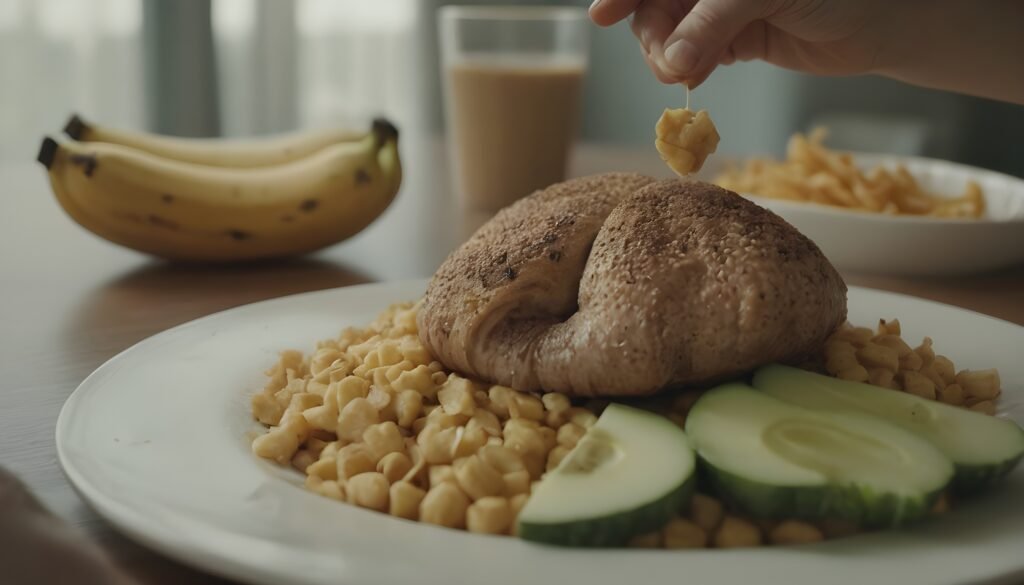Consuming the Correct Foods to Work Out

You may obtain the calories and nutrients you require to power your everyday activities, including regular exercise, by eating a well-balanced diet.
It takes more than just deciding to eat veggies instead of doughnuts to fuel your workout performance. Eating the appropriate foods at the appropriate times of the day is essential.
Find out how important meal plans, nutritious breakfasts, and post-workout snacks are.

Get off to a good start
A Harvard Health Letter article states that having breakfast on a daily basis has been associated with a decreased risk of heart disease, diabetes, and obesity. A nutritious breakfast can aid in restoring your blood sugar levels, which are necessary for your body to function properly and energize your muscles and brain.
On days when you have exercise scheduled, it is especially crucial to eat a nutritious breakfast. If you skip breakfast, you may experience dizziness or fatigue during your workout.
Choosing the correct breakfast is essential. Far too many people begin their days with simple carbs. You won’t feel satisfied after eating a simple white bagel or doughnut for very long.
On the other hand, a breakfast high in protein and fiber may help you resist hunger for longer and provide you the energy you need to continue exercising.
To enjoy a nutritious breakfast, adhere to following guidelines:
Try oatmeal, oat bran, or other high-fiber whole-grain cereals instead of sugar-filled refined-grain cereals. Then, add some protein to the cereal (milk, yogurt, chopped nuts, etc.). If you’re making pancakes or waffles, replace part of the all-purpose flour with whole-grain options. Then, mix some cottage cheese into the batter. If you prefer toast, go for whole-grain bread and pair it with an egg, peanut butter, or another source of protein.
Count on the right carbohydrates
Carbs have a bad reputation because of low-carb fad diets. Your body uses carbs, however, as its primary energy source. Carbohydrates should make up 45 to 65 percent of your daily caloric intake, according to the Mayo Clinic. This is particularly valid if you work out.
It’s crucial to eat the correct kinds of carbohydrates. Many rely on simple carbohydrates, which are present in processed foods and sweets. Eat more of the complex carbohydrates that are present in whole grains, fruits, vegetables, and legumes.
Because they digest more slowly than processed grains, whole grains have a longer shelf life.
They can support your body throughout the day and help you feel fuller for longer. Additionally, they can aid in blood sugar stabilization. And lastly, these high-quality grains include the vitamins and minerals your body requires to function at its peak.
Include protein in your meals and snacks
Your body needs protein to function properly and to develop, maintain, and repair itself. Red blood cells expire, for instance, according to the University of Rochester Medical Center, after roughly 120 days.
Protein is also necessary for muscle growth and repair, which will enhance the effects of your exercise. When carbs are scarce, it may serve as a source of energy, but not as a primary fuel source when working out.
According to the Harvard Health Blog, adults should consume 0.8 grams of protein daily for every kilogram of body weight. Which translates to roughly 0.36 grams of protein per pound of body weight. Elderly people and exercisers could require much more.
Sources of protein include:
fowl, including turkey and chicken; red meat, including beef and lamb; fish, including salmon and tuna; dairy, including milk and yogurt; legumes, including beans and lentils; and eggs
Increase your consumption of fruits and vegetables
Natural fiber, vitamins, minerals, and other substances that your body needs to function correctly can be found in plenty in fruits and vegetables. They are also low in fat and calories.
At every meal, try to have half of your plate full of fruits and vegetables, advises the US Department of Agriculture.
Make an effort to “eat the rainbow” by selecting colorful fruits and vegetables. This will enable you to take advantage of every vitamin, mineral, and antioxidant found in the produce section.
Try selecting a new fruit or vegetable each time you visit the grocery store. Store raw vegetables in the refrigerator and dried fruits in your workout bag for snacks.
Choose healthy fats
Unsaturated fats offer calories and may aid in the reduction of inflammation.
Although fat is the main fuel used in aerobic activity, our bodies have enough stored fat to last through even the longest workouts. But consuming adequate amounts of healthy unsaturated fats contributes to your daily intake of calories and vital fatty acids.
Among the healthful choices are:
nuts, seeds, avocados, olive oil, and other oils.
Fuel up before exercise
Achieving the ideal ratio of carbohydrates to protein is crucial when feeding up before or after an exercise. Protein-rich carbohydrate pre-workout snacks have the potential to boost energy levels more than junk food high in simple sugars and fat.
Consider keeping some of these easy snacks in your fridge and gym bag:
Bananas
Potassium and magnesium, which are essential elements to consume regularly, are abundant in bananas. Eating a banana will supply natural carbohydrates to support your exercise and aid in the replenishment of these minerals. Eat your banana with a dollop of peanut butter for extra protein.
Oranges, grapes, and berries
All of these fruits are high in water content, vitamins, and minerals. They help you stay hydrated, are easy on the stomach, and provide a little energy boost. For added protein, try serving them with some yogurt.
Nuts
Nuts are a fantastic source of critical nutrients, protein, and heart-healthy fats. They can provide you with a steady supply of energy for your exercise.
To get a good supply of carbs, pair them with dried or fresh fruit. But try these out and see how they work out. Foods high in fat can slow down digestion and cause you to eat for longer periods of time if your workout is approaching shortly.
nut butter
Single-serve peanut butter sachets that fit neatly in a gym bag and don’t need to be refrigerated are available at many supermarket stores. You can spread peanut butter on the following for a delicious protein-carb combination:
a banana with an apple
crackers made entirely of grains
A piece of bread with whole grains
Try soy butter, almond butter, or other high-protein substitutes if you’re not a fan of peanut butter.
Avoid calorie-cutting excessively
You might be tempted to drastically reduce the number of calories in your meals if you’re attempting to tone your body or lose weight. Reducing calories is essential for weight loss, but there is such a thing as too much reduction.
Diets for weight loss shouldn’t ever make you feel sick or worn out. These indicate that you’re not consuming enough calories to maintain your level of fitness and health.
For most women who are trying to lose weight healthily, a diet of 1,200 to 1,500 calories per day is appropriate, according to the National Heart, Lung, and Blood InstituteTrusted Source. For most guys who are trying to lose weight, a daily calorie intake of 1,500 to 1,800 is appropriate.
If you have a busy schedule or choose.
Balance is key
You’ll probably learn which foods make you feel the most energetic and which have the opposite impact as you get used to an active lifestyle. Learning to pay attention to your body and strike a balance between what feels good and what’s healthy for you are crucial.
Adhere to these guidelines:
Make eating breakfast a regular component of your day.
Select a range of fruits and vegetables, lean protein sources, complex carbohydrates, and healthy fats.
Keep nutritious food for your workouts in your fridge and gym bag.


Leave a Comment